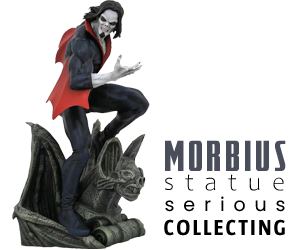July 1941: at a Brooklyn shipyard, Captain America interrupts a band of Bundists (German-American supporters of the Nazis) in the act of sabotage. The battle is witnessed by Daily Bugle reporter Jeff Mace who stops the last remaining baddie with a well-timed punch. Cap congratulates Jeff, calling him a patriot….
Back at the Bugle, he is berated by publisher Simon Goodman for involving himself in the news he is supposed to be covering. Later, he chats with his colleagues, reporter Mary Morgan and photographer Jack Casey. Mary jokingly suggests he don tights and become "Captain America’s stateside sidekick." Jeff mulls the idea and when Mary reveals that her wealthy father has hired goons to bust up a union meeting at one of his factories, he asks if she knows someone who makes costumes….
That night a masked hero called The Patriot appears from nowhere to drive off a gang of toughs threatening striking workers at a shoe factory and the next day, Jeff Mace shows up for work with a bettered face, the result (he claims) of a barroom fight. Mary coyly asks Jeff if he thinks we’ll see the Patriot again, while presenting him with some cake….
Over the next several months the Patriot makes a steady career out of battling homegrown threats to the nation and when Pearl harbor is bombed, America enters the War. As many Bugle staffers join the military, Jeff, rejected for service because of his flat feet, longs to do more. After this, Patriot begins making appearances at rallies and other patriotic events, giving speeches on radio and lending support to war-related causes. Then he joins the Liberty Legion, a team of heroes who protect the home front while the Invaders fight in Europe. As the only team member without real superpowers, Jeff feels he is not contributing as much as the others, but it is pointed out to him that his patriotic costume leads people to believe he is the leader of the group. In December 1943 he meets with Mary, who has been the guinea pig in a mad scientist’s experiments and ended up with superpowers. She wants to be his partner as Miss Patriot. Feeling insecure about his own abilities and position, he rebuffs her (also apparently missing the fact that she is in love with him). When the War ends in Europe, Miss America and the Whizzer are invited to join the Invaders…but Patriot is not. The reason given is that his similarities to Captain America would be confusing to the public….
July 1946: Jeff Mace is being questioned by FBI Agents Ross and Skinner about the death of Captain America. Jeff had learned that the Invaders (now the All-Winners Squad) were in Boston to prevent some villains from assassinating a politician and replacing him with a robot double. As the heroes searched the city, Jeff donned his Patriot outfit and checked out the North Church. There he found Cap gravely injured after a battle with a robot. He tried to save his hero but Cap died anyway. The agents explain to him that the man who died was the second Captain America…and they want Jeff to replace him. Jeff replies that he can never be Captain America but he can carry on in his name….

Your marvelous holiday shopping starts here